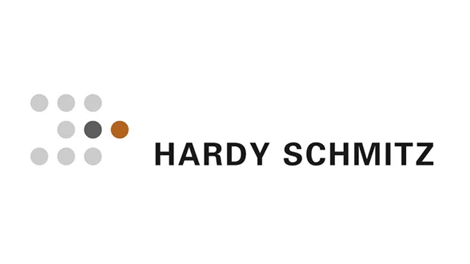Hardy Schmitz – Future-proof lights – the sustainability principle of the special light manufacturer Schuch
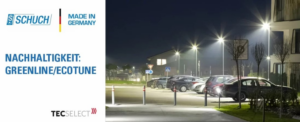 GreenLine lights from Schuch already meet future requirements today
GreenLine lights from Schuch already meet future requirements today
The German lighting manufacturer Schuch is a family company with a long tradition, which is characterized above all by first-class product quality, innovations and its environmental responsibility.
Developing products as sustainably as possible and contributing to more sustainability with the lights themselves are part of Schuch’s corporate philosophy. So it is not surprising that the company created an answer to the future requirements of the new sustainability initiatives of the European Commission at an early stage. Accordingly, a comprehensive new legislative package on the Sustainable Products Initiative (SPI) was adopted, parts of which will already be implemented within this year.
This sets the course for sustainable products to become the EU standard in the future. The new ecodesign regulation replaces and extends the previous directive from 2009 and requires that almost all products on the European market have to meet stricter and more environmentally friendly requirements.
The new EU ecodesign regulation for sustainable consumer goods also affects lamps
With the new sustainability initiatives of the EU, a whole wave of innovations is rolling towards manufacturers that also affect the lighting industry. The manufacturer Schuch has therefore created a new product label for its particularly sustainable products: GreenLine. The company is already labeling all lights that already meet future product requirements today.
The goal of the new initiatives and regulations is to give consumers the opportunity to buy greener, longer-lasting and more energy-efficient products that can be reused, repaired and recycled at the same time. On the other hand, the way should be paved for all EU member states to become climate-neutral by 2050.
The most important EU sustainability initiatives at a glance
Green deal
The new Ecodesign Regulation is just one part of the European Green Deal (European Green Deal) to achieve climate neutrality by 2050. The Green Deal includes a number of measures in the areas of financial market regulation, energy supply, transport, trade, industry as well as agriculture and forestry . Existing regulations such as the Waste Framework Directive (WFD), the Waste Directive for Electrical and Electronic Equipment (WEEE) and the REACH Regulation are being reviewed and revised accordingly.
Ecodesign Regulation
With the new ecodesign regulation for sustainable products, consumer goods available on the EU market should be as sustainable as possible by 2030, i.e. more energy and resource efficient, repairable, reusable and preferably made of recycled materials. A digital product pass should also provide consumers with more transparent information on the sustainability of the product.
Taxonomy Regulation
The EU’s green taxonomy regulation comes into effect this year and will play a key role in investments in sustainable projects, technologies and entrepreneurial activities. The EUTAX therefore defines which economic activities are to be classified as economically sustainable. Binding and cross-industry standards within the EU for sustainable management are thus defined. Everything with a view to achieving the centrally defined sustainability goals.
Schuch lights are already prepared for the climate-neutral future
Schuch is well prepared for the coming innovations and is thus creating the basis for efficient and ecologically balanced lighting in accordance with the new EU regulations. With this, the German manufacturer of technical lights once again proves that the company’s sustainable orientation and lived environmental responsibility form a future-proof investment basis for customers from industry, commerce and municipalities.
On the one hand, with the introduction of its GreenLine label, Schuch offers its customers a simple way of recognizing particularly environmentally friendly products at first glance. On the other hand, various control functions such as EcoTune can be used to implement ecological outdoor lighting solutions that keep the negative impact on the ecosystem as low as possible.
GreenLine – the label for sustainable and future-proof product design
The GreenLine label stands for a sustainable product design that is already geared towards the sustainability criteria of the Green Deal, the European Ecodesign Regulation and the EU Taxonomy Regulation.
These basic requirements, including the corresponding additional requirements, are all verifiable and objectively measurable, making the sustainability of the GreenLine lights from Schuch transparent and tangible for everyone:
- upgrade ability
- Modular construction
- Recycled content ≥ 50%
- Recyclability ≥ 80%
- Decomposability at end of life
- Product guarantee at least 5 years
- Spare parts availability at least 10 years
- Interchangeability of ECG and LED modules
- Use of standardized Zhaga-compliant LED modules
- 100% recycled paper packaging
- ULOR = 0 for outdoor lights (percentage upward radiation value)
- High system efficiency (outdoor lights > 130 lm/W – indoor lights > 150 lm/W)
- Long service life (outdoor lights L90 > 100,000 hours – indoor lights L80 > 100,000 hours)
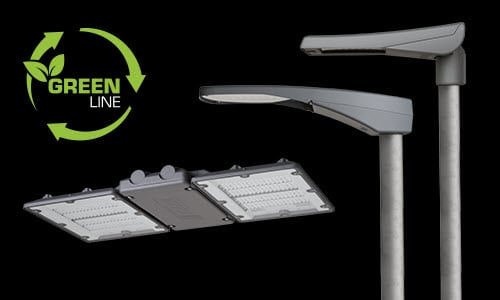
All Schuch lights marked with a GreenLine label fully meet the aforementioned criteria. To ensure this, regular product tests are carried out.
EcoTune – optimized light color for pioneering outdoor lighting
Modern and intelligent lighting in public areas such as streets, paths, squares and buildings saves energy, reduces light pollution and protects biodiversity – without neglecting the safety of road users and residents. EcoTune lights are a solution from Schuch for realizing ecologically adaptable light colors in lighting.
The control function called EcoTune offers the possibility of optimally adapting the light color to the environmental requirements. To this end, two different light colors are combined in each light – from neutral white to warm white. Depending on the mixing ratio, the optimal light color is provided for the respective time and purpose, which also respects the nocturnal ecosystem.
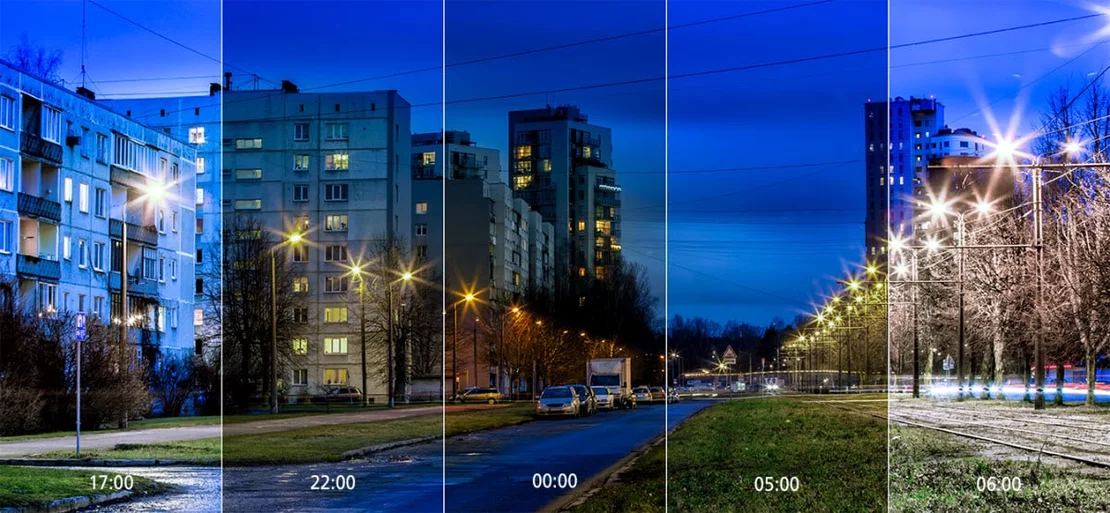
If a brighter and higher-contrast light is required in the evening and morning hours in order to meet the safety requirements of road traffic, the light with a higher proportion of blue prevails. On the other hand, a warmer and therefore more insect-friendly color temperature can be selected for the night hours.
Modern multi-layer lighting technology ensures uniform and homogeneous illumination – regardless of the selected light color combination. The color control is automated and can be adapted to the daily and seasonal cycle.
The advantages of the Schuch EcoTune lights at a glance:
- The multi-layer principle guarantees homogeneous illumination of the entire surface
- Automatic and individual adjustment of light color and luminous flux
- Illuminance and dimming profile can be individually programmed and adjusted
- Weather-dependent adjustable luminous flux optimizes visibility (minimizes glare)
- Mixing ratios of the 2 light colors enable optimized light depending on the time of day
- Each light has 2 different light colors (from neutral white to warm white)
- Ecological light in urban and natural environments for the preservation of biodiversity
- Light emissions into the night sky are minimized (reduction of light pollution)
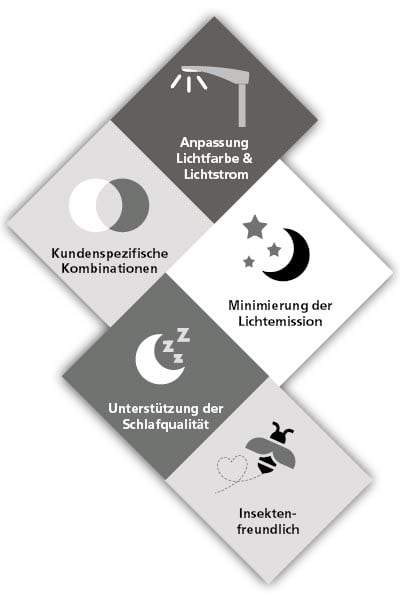
Weather conditions also affect visibility. It therefore makes sense for luminaires to be able to adjust not only the light color but also the light distribution accordingly. Luminaires that combine different optics are ideal for this: a wide-beam light distribution on dry roads and a narrow-beam light distribution on wet roads.
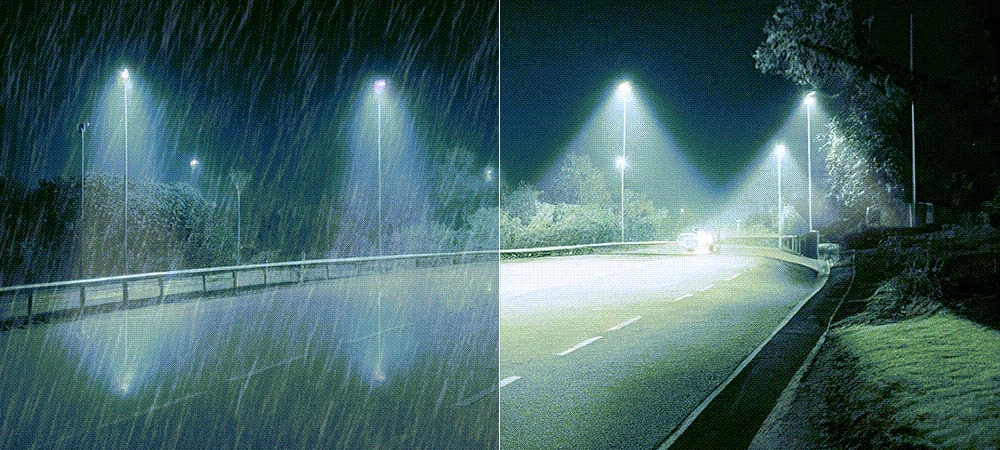
Of course, the topic of light management also plays an important role when it comes to efficient and sustainable lighting. With LIMAS and RFL, Schuch offers various options for controlling the lighting intelligently – from permanently installed to retrofittable light management components, sensors and motion detectors, etc.
The selection of lights with the GreenLine label and EcoTune – sustainable quality “Made in Germany”
Several lamp series from Schuch have been awarded the GreenLine label. These include the technical lights of this series for outdoor and indoor areas, others will follow:
Street lighting – LED pole lights
Series 51 / 52 VIA
with EcoTune
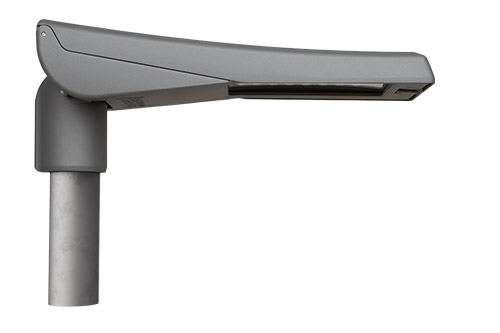
Series 47 / 48
with EcoTune
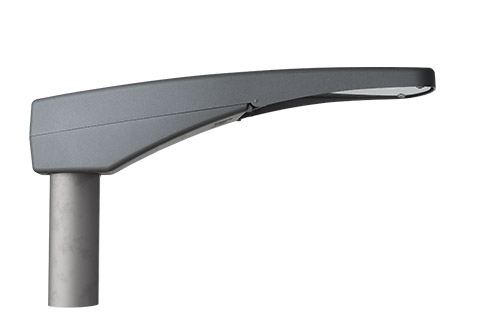
FILOS VARIO Series 42 VARIO
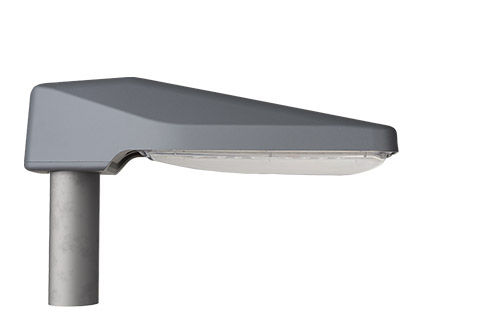
Exterior Lights – LED Floodlights
FOCO series 7600 VARIO
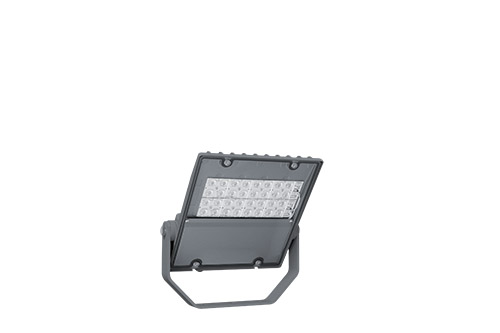
FOCO L Series 7700
with EcoTune
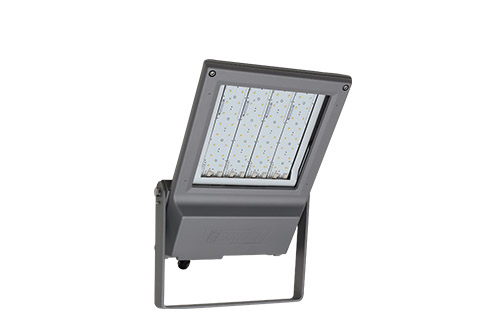
FOCO XL Series 7800
with EcoTune
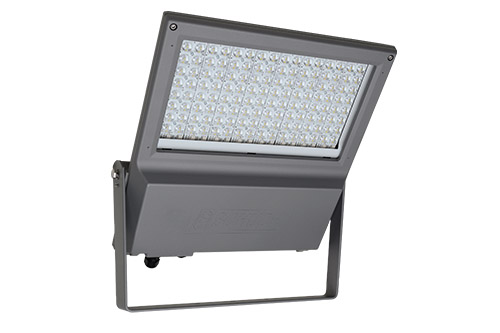
Interior lights – LED high bay lights with 2-point suspension
DUEVO series 3301
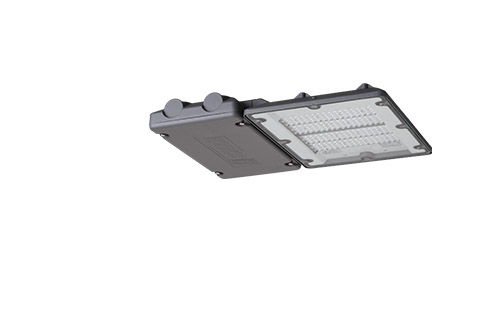
DUEVO series 3302
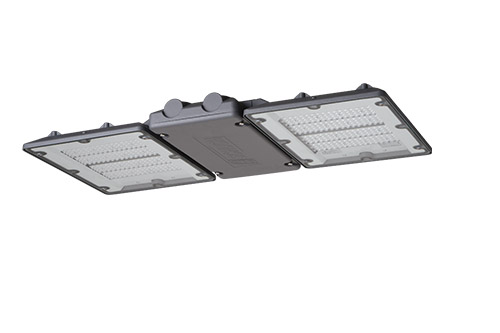
DUEVO XL series 3305
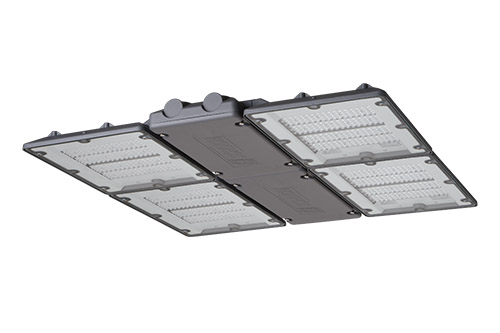
DUEVO 3302 V
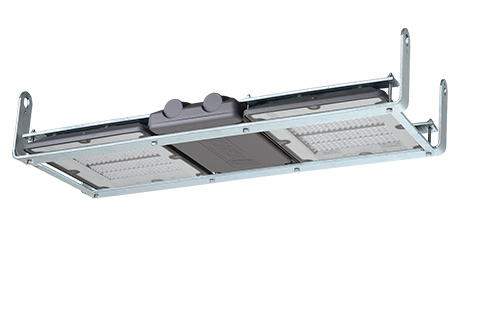
Source
Hardy Schmitz Group
EMR Analysis
More information on Hardy Schmitz: https://www.hardy-schmitz.de + With a very broad and deep product portfolio of over 300,000 branded products from well-known manufacturers, one of the largest cable warehouses in Germany, our branch network and a comprehensive range of services, we offer the best quality, innovative products and reliable, fast delivery. With our company motto ELECTROLOGISTICS WITH SERVICEPLUS, we guarantee our customers tailor-made solutions and the best results in the implementation of their projects.
In addition to first-class and constantly expanding ranges of electrical engineering and industrial electrics, we guarantee our customers a reliable network of suppliers.Our sophisticated storage and logistics system also enables not only a 24-hour delivery service, but also, if desired, just-in-time deliveries directly to production, to the machine or to the construction site.
Our distinctive customer orientation as well as our range of exclusively high-quality products and a comprehensive portfolio of innovative services are the key to our success.
Progress is a tradition for our company and as an innovative system service provider, our customers benefit from individual, tailor-made optimization processes in procurement. We attach great importance to recognizing the special requirements of our customers and offering them individual solutions that we implement effectively together.
Our goal is to make procurement processes along the entire value chain efficient. Preserve existing values and create new ones for and with our business partners. Therefore, we maintain a sustainable, partnership relationship with our customers, suppliers and employees.
In addition, HARDY SCHMITZ plans and manufactures individual low-voltage switchgear and controls. And we are competently at your side in the areas of cable logistics, KNX project planning, e-mobility and lighting planning.
More information on Jan Schmitz (Managing Partner & Chairman of the Management Board, Hardy Schmitz): See the full profile on EMR Executive Services
More information on SCHUCH: https://www.schuch.de/en + With passion for excellent lighting.
Since its foundation in 1895, the brand SCHUCH stands for competence and quality in the field of technical luminaires. High innovative strength, high standards of quality, high technical expertise and high vertical integration characterise SCHUCH, as well as reliability, continuity and sense of responsibility towards customers, business partners, employees and the environment. Always owner-managed, meanwhile the fifth generation successfully continues the tradition of the family company and leads it into the future.
The company grew over more than 125 years due to innovative strength, vision and high motivation and commitment of all employees, reaching an outstanding international reputation as a lighting specialist and becoming one of the leading enterprises in this business.
- 320 Employees
- 5 Generations
- 127 Years of experience
More information on Carlo Wolf (Managing Director, Adolf Schuch GmbH): https://www.schuch.de/en/unternehmen/125
More information on EcoTune by SCHUCH: https://www.schuch.de/en/ecotune + Adaptive light for outdoor areas. Humans and nature should not be affected by artificial light more than absolutely necessary. This is achieved with the help of colour-changing, controlled light. In this way, the right amount and colour of light can be provided in each case, which also respects the nocturnal ecosystem (“insect mode”).
For this purpose, two different light colours are combined in one luminaire, for example the neutral white with 4,000 K and the more nature-friendly light colour 2,200 K. By changing the mixing ratio of the two light colors, the emitted light can be changed to a warmer, more pleasant light during the quieter evening and night hours. In the morning hours, on the other hand, the proportion of neutral white light colour is increased again, resulting in brighter, higher-contrast light, again to meet the higher safety requirements of increasing traffic. The multi-layer principle, in which each individual LED illuminates the entire surface, guarantees that – regardless of the respective light colour combination – there is always uniform illumination.
In conjunction with motion sensors, the light can be additionally controlled. At times when the lighting is reduced in power or dimmed, the presence of people or vehicles causes the luminous flux to increase (and then decrease again) to meet the need for safety.
More information on the Bundesministerium für Umwelt, Naturschutz, Nukleare Sicherheit und Verbraucherschutz (BMUV): https://www.bmuv.de/en/ + The Federal Ministry for the Environment, Nature Conservation, Nuclear Safety and Consumer Protection (BMUV) is responsible for a range of government policies that are reflected in the name of the ministry itself. The ministry has been working over 30 years to protect the public from environmental toxins and radiation, to promote the wise and efficient use of raw materials, to advance climate action and to ensure that natural resources are used in a way that protects the diversity of animal and plant species and preserves their habitats.
The structure and name of the ministry was changed by the organisational decree of the Federal Chancellor of 8 December 2021. Since then, the BMUV has been responsible not only for environmental protection and nature conservation, but also consumer protection policy. The BMUV therefore shapes core issues for the future that focus on people and their living environments. It drives economic, environmental and social modernisation. Climate action also remains a key issue for the BMUV with a focus on natural climate solutions, climate adaptation and resource policy.
More information on The European Union: https://european-union.europa.eu/index_en + The European Union’s institutional set-up is unique and its decision-making system is constantly evolving. The 7 European institutions, 7 EU bodies and over 30 decentralised agencies are spread across the EU. They work together to address the common interests of the EU and European people.
In terms of administration, there are a further 20 EU agencies and organisations which carry out specific legal functions and 4 interinstitutional services which support the institutions.
All of these establishments have specific roles – from developing EU laws and policy-making to implementing policies and working on specialist areas, such as health, medicine, transport and the environment.
There are 4 main decision-making institutions which lead the EU’s administration. These institutions collectively provide the EU with policy direction and play different roles in the law-making process:
- the European Parliament (Brussels/Strasbourg/Luxembourg)
- the European Council (Brussels)
- the Council of the European Union (Brussels/Luxembourg)
- the European Commission (Brussels/Luxembourg/Representations across the EU)
Their work is complemented by other institutions and bodies, which include:
- the Court of Justice of the European Union (Luxembourg)
- the European Central Bank (Frankfurt)
- the European Court of Auditors (Luxembourg)
The EU institutions and bodies cooperate extensively with the network of EU agencies and organisations across the European Union. The primary function of these bodies and agencies is to translate policies into realities on the ground.
Around 60,000 EU civil servants and other staff serve the 450 million Europeans (and countless others around the world).
Currently, 27 countries are part of the EU: https://european-union.europa.eu/principles-countries-history/country-profiles_en
More information on The European Commission: https://ec.europa.eu/info/index_en + The Commission helps to shape the EU’s overall strategy, proposes new EU laws and policies, monitors their implementation and manages the EU budget. It also plays a significant role in supporting international development and delivering aid.
The Commission is steered by a group of 27 Commissioners, known as ‘the college’. Together they take decisions on the Commission’s political and strategic direction.
A new college of Commissioners is appointed every 5 years.
The Commission is organised into policy departments, known as Directorates-General (DGs), which are responsible for different policy areas. DGs develop, implement and manage EU policy, law, and funding programmes. In addition, service departments deal with particular administrative issues. Executive agencies manage programmes set up by the Commission.
Principal roles in law: The Commission proposes and implements laws which are in keeping with the objectives of the EU treaties. It encourages input from business and citizens in the law-making process and ensures laws are correctly implemented, evaluated and updated when needed.
More information on Ursula von der Leyen (President, The European Commission): https://ec.europa.eu/commission/commissioners/2019-2024/president_en + https://www.linkedin.com/in/ursula-von-der-leyen/
More information on the EU Green Deal Industrial Plan (GDIP): https://ec.europa.eu/commission/presscorner/detail/en/ip_23_510 + The Green Deal Industrial Plan to enhance the competitiveness of Europe’s net-zero industry and support the fast transition to climate neutrality. The Plan aims to provide a more supportive environment for the scaling up of the EU’s manufacturing capacity for the net-zero technologies and products required to meet Europe’s ambitious climate targets.
The Plan builds on previous initiatives and relies on the strengths of the EU Single Market, complementing ongoing efforts under the European Green Deal and REPowerEU. It is based on four pillars: a predictable and simplified regulatory environment, speeding up access to finance, enhancing skills, and open trade for resilient supply chains.
More information on Ecodesign for Sustainable Product Regulation (ESPR): https://commission.europa.eu/energy-climate-change-environment/standards-tools-and-labels/products-labelling-rules-and-requirements/sustainable-products/ecodesign-sustainable-products_en + The Ecodesign for Sustainable Products Regulation (ESPR) is an ambitious EU initiative to make sustainable products the norm in the EU and boost Europe’s resource independence. It is rooted primarily in the European Commission’s Circular Economy Action Plan of March 2020, which in turn is based on the European Green Deal of 2019. The Ecodesign for Sustainable Products Regulation establishes a framework to improve the environmental sustainability of products and to ensure free movement in the internal market by setting ecodesign requirements that products shall fulfil to be placed on the market or put into service.
The main objectives of this regulation are to reduce the negative life cycle environmental impacts of products and improve the functioning of the internal market. In addition to contributing to the objectives of EU industrial policy to boost the supply of and demand for sustainable goods, deliver on sustainable production, and ensure a level playing field for products sold on the internal market.
On 30 March 2022 the European Commission has adopted a wide-scope ESPR proposal, including the creation of an EU Digital Product Passport (DPP). It is now with the European Parliament and the Council for adoption in the co-legislative procedure. The year 2023 will be key to finalise the requirements. ESPR could then start applying from 2024.
More information on REACH Regulation: https://ec.europa.eu/environment/chemicals/reach/reach_en.htm + REACH (EC 1907/2006) aims to improve the protection of human health and the environment through the better and earlier identification of the intrinsic properties of chemical substances. This is done by the four processes of REACH, namely the registration, evaluation, authorisation and restriction of chemicals. REACH also aims to enhance innovation and competitiveness of the EU chemicals industry.
REACH Regulation places responsibility on industry to manage the risks from chemicals and to provide safety information on the substances. Manufacturers and importers are required to gather information on the properties of their chemical substances, which will allow their safe handling, and to register the information in a central database in the European Chemicals Agency (ECHA) in Helsinki. The Agency is the central point in the REACH system: it manages the databases necessary to operate the system, co-ordinates the in-depth evaluation of suspicious chemicals and is building up a public database in which consumers and professionals can find hazard information.
More information on the Waste Framework Directive (WFD): https://environment.ec.europa.eu/topics/waste-and-recycling/waste-framework-directive_en + The Waste Framework Directive sets the basic concepts and definitions related to waste management, including definitions of waste, recycling and recovery.
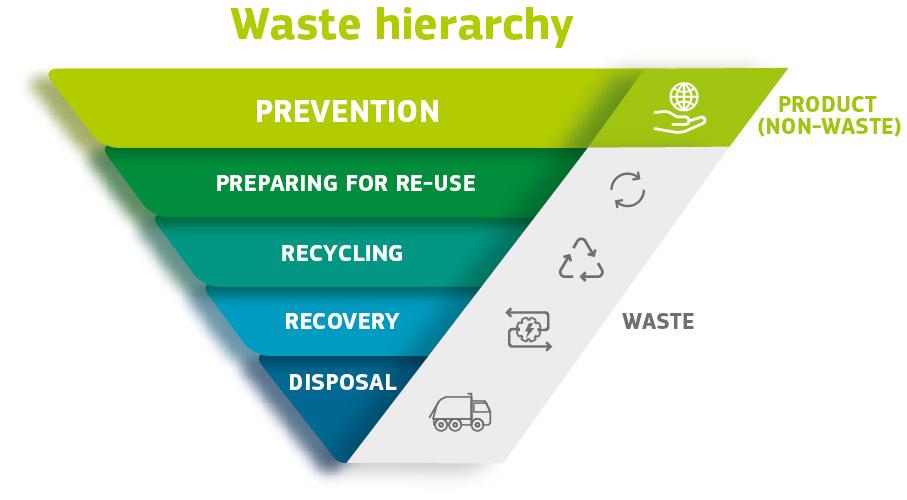
Preventing waste is the preferred option, and sending waste to landfill should be the last resort.
The Waste Framework Directive lays down some basic waste management principles. It requires that waste be managed
- without endangering human health and harming the environment
- without risk to water, air, soil, plants or animals
- without causing a nuisance through noise or odours
- and without adversely affecting the countryside or places of special interest
More information on the EU Taxonomy Regulation: https://eu-taxonomy.info/info/eu-taxonomy-overview + The EU taxonomy regulation describes a framework to classify “green” or “sustainable” economic activities executed in the EU. Previously, there was no clear definition of green, sustainable or environmentally friendly economic activity. The EU taxonomy regulation creates a clear framework for the concept of sustainability, exactly defining when a company or enterprise is operating sustainably or environmentally friendly. Compared to their competitors, these companies stand out positively and thus should benefit from higher investments. Thereby, the legislation aims to reward and promote environmentally friendly business practices and technologies. The focus lays on the following six environmental objectives:
- Climate change mitigation
- Climate change adaptation
- Sustainable use and protection of water and marine resources
- Transition to a circular economy
- Pollution prevention and control
- Protection and restoration of biodiversity and ecosystems
By passing the Green Deal in 2019, the European Union (EU) set the course for more sustainable investments, for example in areas like renewable energy, biodiversity or circular economy. The goal is to reach a climate-neutral economy in the EU by 2050, with a reduction of 55% already implemented in 2030. To achieve these climate goals, the Green Deal includes an investment plan of 1 trillion euros over the next 10 years. Despite this huge investment, the EU depends also on the support of the private sector to achieve the Paris climate agreement.
The EU Taxonomy regulation and the Sustainable Finance Disclosure Regulation (SFDR) are implemented to ensure equal competition and legal certainty for all companies operating within the EU. Both regulations follow the objective of the Green Deal and have the following key goals:
- Reorientation of capital flows with a focus on sustainable investments
- Establishing sustainability as a component of risk management
- Promoting/encouraging long-term investment and economic activity
EMR Additional Note on the EU Ecodesign and Energy labelling regulations that came into effect on September 1, 2021:
- https://ec.europa.eu/info/energy-climate-change-environment/standards-tools-and-labels/products-labelling-rules-and-requirements/energy-label-and-ecodesign/energy-efficient-products/lighting_en
- Following the rescaling of the EU energy label for light sources from 1 September 2021, the new labels use a scale from A (most efficient) to G (least efficient). Because of the constant improvement in energy efficiency, most products under the original label had risen to A+ or A++ – and so a rescaling was made in order to be clearer to the consumer about which are the most efficient products on the market. [NB Existing stocks with the old label may still be sold in shops until 1 March 2023.] The labels provide information on the product’s
- energy efficiency class
- energy consumption
- Following the rescaling of the EU energy label for light sources from 1 September 2021, the new labels use a scale from A (most efficient) to G (least efficient). Because of the constant improvement in energy efficiency, most products under the original label had risen to A+ or A++ – and so a rescaling was made in order to be clearer to the consumer about which are the most efficient products on the market. [NB Existing stocks with the old label may still be sold in shops until 1 March 2023.] The labels provide information on the product’s
- See the new label under: https://ec.europa.eu/commission/presscorner/detail/en/ip_21_4484
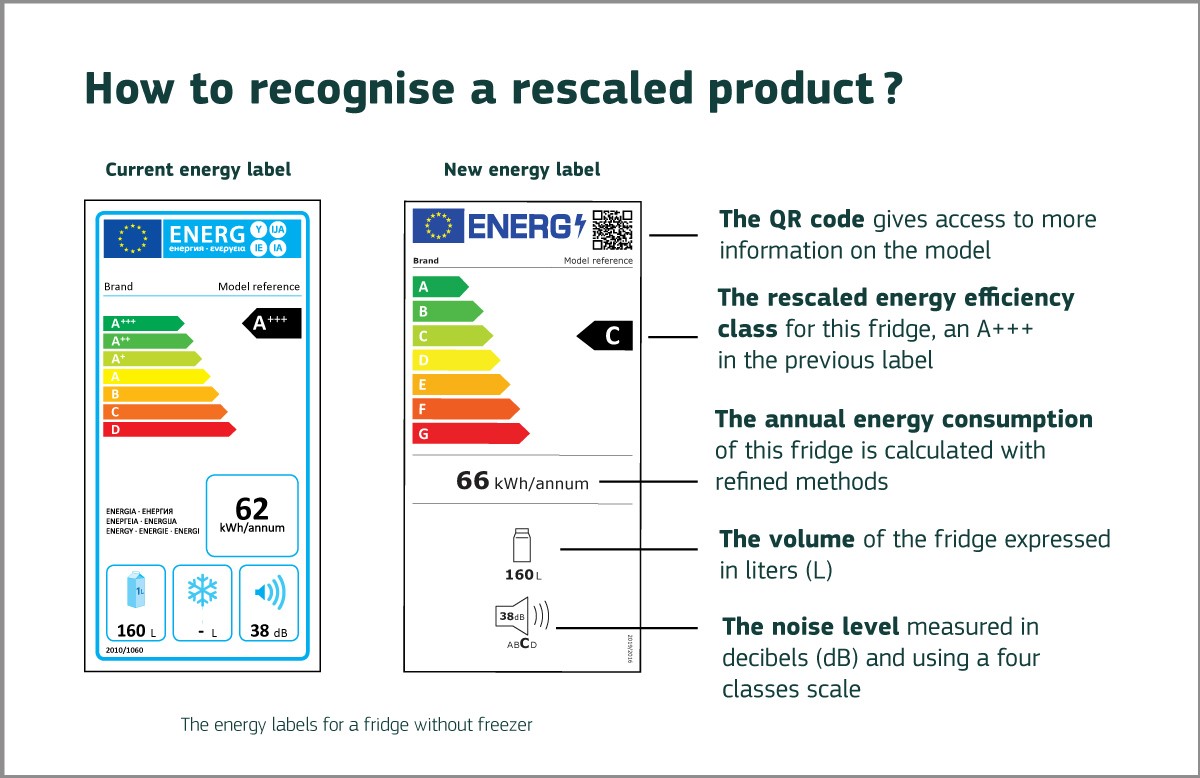
EMR Additional Note on WEEE:
- https://ec.europa.eu/environment/topics/waste-and-recycling/waste-electrical-and-electronic-equipment-weee_en
- Waste from Electrical and Electronic Equipment (WEEE): EU rules on treating waste electrical and electronic equipment, to contribute to sustainable production and consumption.
- Waste from electrical and electronic equipment includes a large range of devices such as computers, fridges and mobile phones at the end of their life. This type of waste contains a complex mixture of materials, some of which are hazardous. These can cause major environmental and health problems if the discarded devices are not managed properly. In addition, modern electronics contain rare and expensive resources, which can be recycled and re-used if the waste is effectively managed.
- Improving the collection, treatment and recycling of electrical and electronic equipment (EEE) at the end of their life can
- improve sustainable production and consumption
- increase resource efficiency
- contribute to the circular economy
- The EU has introduced the WEEE Directive and the RoHS Directive to tackle the issue of the growing amount of WEEE.
EMR Additional Notes:
- LED:
- LED stands for Light Emitting Diode.
- LED lighting products produce light up to 90% more efficiently than incandescent light bulbs. How do they work? An electrical current passes through a microchip, which illuminates the tiny light sources we call LEDs and the result is visible light.
- A light-emitting diode is a semiconductor light source that emits light when current flows through it. Electrons in the semiconductor recombine with electron holes, releasing energy in the form of photons.

